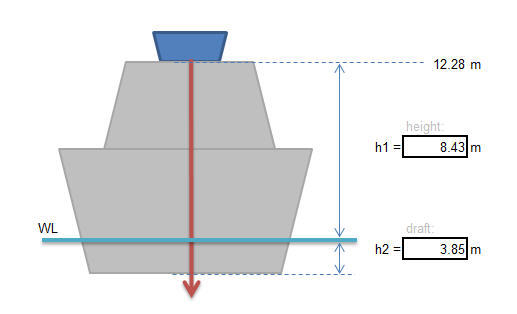NuckChorris
Marine/Ocean
- Feb 10, 2017
- 4
Hi guys, first post ![[smile] [smile] [smile]](/data/assets/smilies/smile.gif) so a quick intro: I'm an jr. marine engineer in the Netherlands working for a shipyard building superyachts. My field of experience is mostly HVAC and propulsion, but of course I get all kinds of fun little projects here. As I'm eager to become more experienced at all the different marine engineering areas I try to read up and sometimes ask some questions here at the forum. My fluid mechanics and pump knowledge can use some freshing up, so thanks in advance!
so a quick intro: I'm an jr. marine engineer in the Netherlands working for a shipyard building superyachts. My field of experience is mostly HVAC and propulsion, but of course I get all kinds of fun little projects here. As I'm eager to become more experienced at all the different marine engineering areas I try to read up and sometimes ask some questions here at the forum. My fluid mechanics and pump knowledge can use some freshing up, so thanks in advance!
Problem: We have swimmingpools and whirlpools on our yachts and they have an emergency drain which must drain the (whirl)pool within 3 minutes. I figured out the maths for a normal drain (diameter) which has the outlet on the side of the ship just above the waterline. But now they ask for an outlet under the waterline so they can rout the (rather big) pipe straight down through the ship with the outlet at the bottom of the ship.
Question: How does a pipe outlet approx. 3 meters under the waterline decrease the time of draining for an 'open water tank' (whirlpool).
My thoughts: you will have an additional backpressure at outlet (3m under water - 3kPa extra backpressure), but I'm not so sure and I can't seem to figure out how much it will decrease. I only need to have an indication, as there can be all kinds of unpredictable turbulent flows and of course we take a safety factor, and the end result will only be the choice for a pipe diameter.
![[smile] [smile] [smile]](/data/assets/smilies/smile.gif) so a quick intro: I'm an jr. marine engineer in the Netherlands working for a shipyard building superyachts. My field of experience is mostly HVAC and propulsion, but of course I get all kinds of fun little projects here. As I'm eager to become more experienced at all the different marine engineering areas I try to read up and sometimes ask some questions here at the forum. My fluid mechanics and pump knowledge can use some freshing up, so thanks in advance!
so a quick intro: I'm an jr. marine engineer in the Netherlands working for a shipyard building superyachts. My field of experience is mostly HVAC and propulsion, but of course I get all kinds of fun little projects here. As I'm eager to become more experienced at all the different marine engineering areas I try to read up and sometimes ask some questions here at the forum. My fluid mechanics and pump knowledge can use some freshing up, so thanks in advance!Problem: We have swimmingpools and whirlpools on our yachts and they have an emergency drain which must drain the (whirl)pool within 3 minutes. I figured out the maths for a normal drain (diameter) which has the outlet on the side of the ship just above the waterline. But now they ask for an outlet under the waterline so they can rout the (rather big) pipe straight down through the ship with the outlet at the bottom of the ship.
Question: How does a pipe outlet approx. 3 meters under the waterline decrease the time of draining for an 'open water tank' (whirlpool).
My thoughts: you will have an additional backpressure at outlet (3m under water - 3kPa extra backpressure), but I'm not so sure and I can't seem to figure out how much it will decrease. I only need to have an indication, as there can be all kinds of unpredictable turbulent flows and of course we take a safety factor, and the end result will only be the choice for a pipe diameter.

